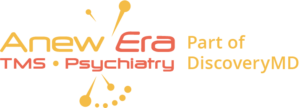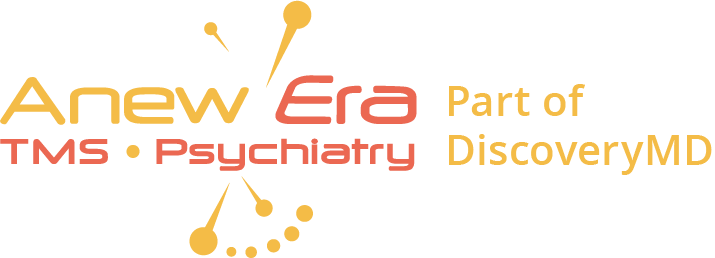TMS Therapy vs. ECT Therapy: Which is better for psychiatric treatment?
We all know that we need to keep our brains active and stimulated in order to stay sharp as we age. But sometimes, mental illness can make it tough to muster up the energy and motivation to do things that are good for us. That’s where brain stimulation comes in.
There are two main types of brain stimulation: electro-convulsive therapy (ECT) and transcranial magnetic stimulation (TMS). Both of these methods work by stimulating and healing weak regions of the brain that are affected by mental illness.
ECT uses direct electric currents to stimulate the brain, while TMS uses magnetic frequencies. While they both have proven to be effective in treating mental illness, they work in very different ways.
No matter which method of brain stimulation you choose, the goal is to help you feel better and improve your quality of life. If you’re struggling with mental illness, talk to your doctor about whether brain stimulation could be right for you.
So What is the difference between ECT and TMS?
ECT is a safe and effective treatment option for mental illnesses such as depression and bipolar disorder. It is non-invasive and involves using small electric currents to trigger a brief, controlled seizure in the brain. ECT appears to create changes in brain chemistry that can quickly improve certain mental health symptoms. Although ECT is effective, it is underused as a treatment option. This is possibly due to factors such as stigma and misinformation, lack of availability, or concerns over side effects. The reality of treatment with ECT is that it is very different from it was decades ago when it was in the early stages of development. As with any treatment approach, the goal is to provide the highest benefit with the least amount of risk. ECT has emerged as a safe and effective option that can help people with mental illness recover and live healthy lives.
ECT is typically administered in a series of treatments, usually a few times per week. The patient is asleep during the procedure and wakes up 5-10 minutes after it is finished. Normal activity can usually be resumed within an hour. Some people may require occasional “maintenance ECT” treatments after completing their initial series.
Generally, ECT is effective for treating depression, with 70-90% of patients reporting an improvement in their condition. However, there are some potential side effects associated with the treatment, which may include headaches, muscle soreness, or nausea. Additionally, short-term memory loss is a common side effect during treatment, but this usually resolves itself shortly after ECT is completed. In rare cases, long-term memory loss may occur, but this is not usually permanent.
ECT can be used to treat patients with very aggressive psychotic symptoms. However, the risks and invasive nature of this treatment require patients to take a break from life affairs. Caregivers, psychotherapy, and hospitalization are all recommended. ECT is a procedure in which a doctor applies an electric current directly to regions of a patient’s brain. In this process, the specialist will induce a brief therapeutic seizure to increase brain activity. The patient is given muscle relaxers and general anesthesia, making them unaware of the 60-second seizure they experience. ECT can be an effective treatment for patients with severe psychiatric symptoms, but it is important to weigh the risks and benefits of this procedure before deciding to undergo treatment.
TMS is a non-invasive treatment that uses magnetic fields to stimulate nerve cells in the brain. TMS is safe and effective and is used to treat a range of mental and physical health conditions, including depression, obsessive-compulsive disorder, PTSD, pain and substance use disorders, and others. This can be particularly important for individuals who have not benefitted from other treatments.
During TMS, an electromagnetic coil is placed on a person’s scalp near their forehead. Short magnetic pulses are painlessly directed into an area of the brain that controls moods. The doctor performing the treatment will determine the amount of magnetic energy needed during the first treatment session. TMS treatments usually last between 40-60 minutes.
TMS does not require the use of anesthesia and the person remains awake during treatment. Like ECT, several sessions occur over a period of weeks. Rapidly administered pulses are called repetitive TMS (rTMS) and can provide longer-lasting changes in brain activity. You may see treatment referred to interchangeably as TMS or rTMS.
The benefits of TMS have been scientifically proven in numerous studies. For example, one study showed that TMS was an effective treatment for patients who had not responded to other forms of treatment, such as medication and talk therapy. In this study, 64% of patients reported an improvement in symptoms after receiving TMS treatment.
There are few reported side effects of TMS. The most commonly reported side effect is headache, which is usually mild and diminishes over the course of treatment. Less commonly, people report scalp pain or facial twitching. The most serious risk of TMS is seizures; however, current evidence suggests the risk of seizures is very rare (about 0.03%), with no evidence of permanent damage. While TMS does have some side effects, these are few and much less severe than those associated with ECT. Magnetic stimulation enables individuals to work, exercise, and participate in psychotherapy on a regular basis, activities which can be very difficult to pursue after ECT. Many individuals find that ECT is simply too overwhelming for their levels of depression or other conditions.
If you are considering TMS for yourself or a loved one, it is important to talk to a qualified doctor to see if this treatment is right for you. TMS is a safe and effective treatment for many people, but it is not right for everyone. A qualified doctor will be able to help you understand the risks and benefits of TMS and make an informed decision about whether or not this treatment is right for you.
The pros of TMS include:
- It is completely non-invasive
- It is well-tolerated and safe.
- It is non-sedative.
- It is non-drug therapy.
- It has long-lasting results.
The cons of TMS include:
- It works best when supplemented with therapy.
- Getting insurance to cover TMS can be challenging at times.
- The treatment requires 3-5 sessions a week for an average of 6 weeks.
- Some people experience discomfort during the treatment, though it is widely perceived as tolerable.
Pros of ECT:
- Safer today than previous ECT treatments
- No medication side effects
- Works slightly quicker than TMS
Cons of ECT:
- May not be able to return to work or drive for up to 2 weeks after treatment
- Treatment sessions are done 2 to 3 times a week for up to 4 weeks
- Requires sedation through anesthesia and muscle relaxers
- Confusion post-treatment
- Typically not well tolerated in the elderly population
- Memory loss (retrograde amnesia) usually improves within a couple of months of the procedure
- Physical side effects related to tension (nausea, headache, jaw aches, and muscle aches
- Not tolerated well by people with heart problems
Requirements for Treatment
ECT is often recommended for treating severe depression or mania, as it is one of the most effective treatments available. In cases where first-line treatments like psychodynamic therapy or selective serotonin reuptake inhibitors are ineffective, ECT may be used as a last resort. However, its high level of efficacy makes it a valuable treatment option for many people suffering from severe mental illness.
TMS is a treatment option that has been shown to be effective in alleviating symptoms of mental health conditions. It is especially attractive to those who have recently started battling a mental health condition, as well as those who have treatment-resistant conditions. TMS can also be useful for patients who are undergoing other forms of treatment, such as medication or psychotherapy. TMS is an effective and safe choice for those who cannot bear the side effects of other treatments, such as ECT. Another important factor to consider with TMS is age. Adults and children can go through regular TMS, but deep TMS is specific to patients 18 years or older.
TMS and You
Now that you understand the differences between TMS and ECT, you may be wondering which is the best option for you. In most cases, people seem to gravitate towards TMS because it has advantages over ECT in a number of ways. But this isn’t always the case. If you’re interested in TMS, our staff can give you more information on your specific condition to see if it is the right option for you.
Call us for a free consultation and we will happily walk you through every step of our assessments and procedures.





